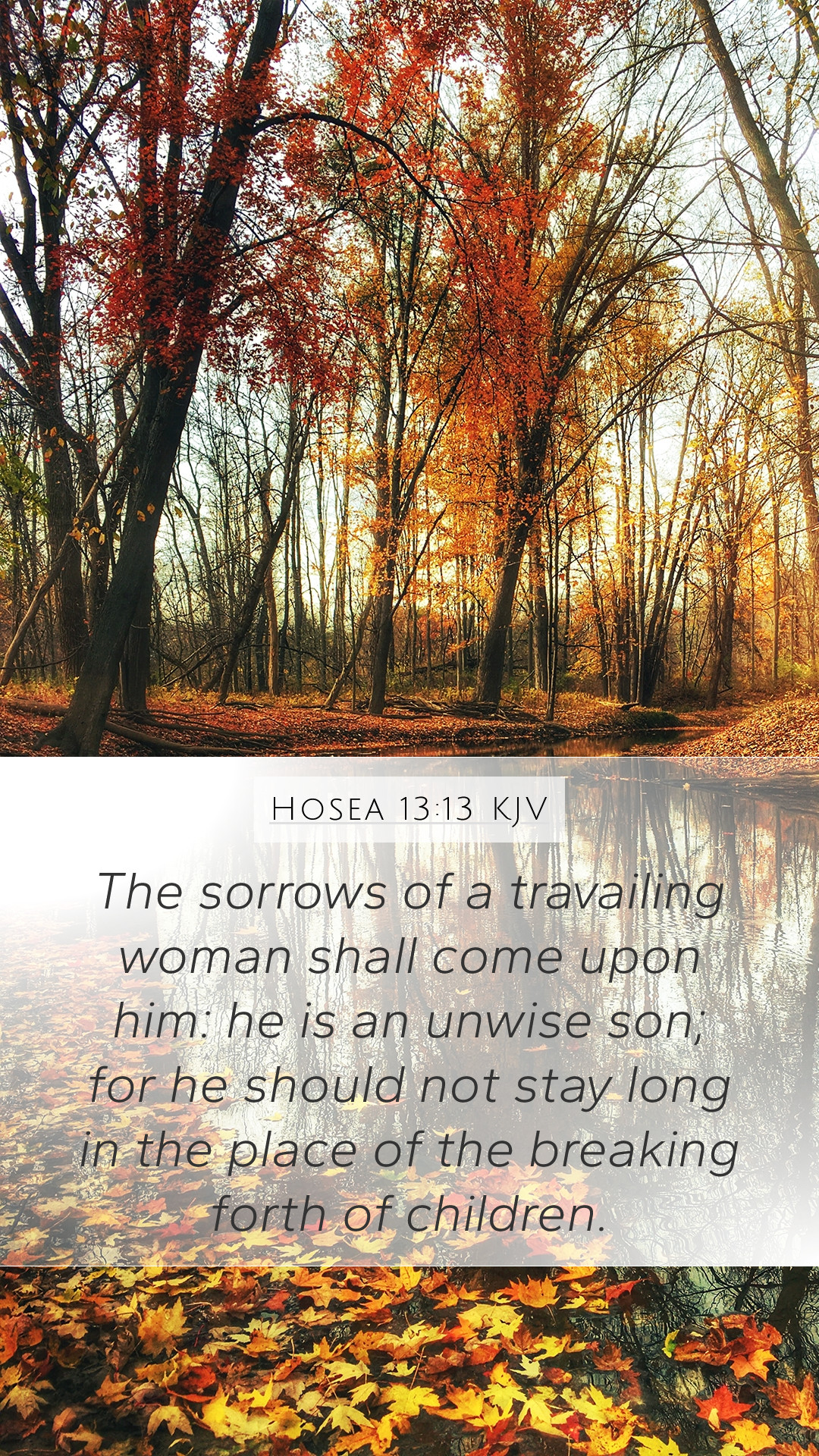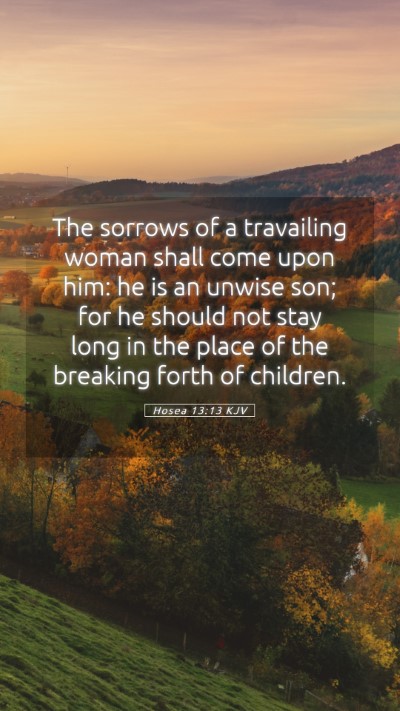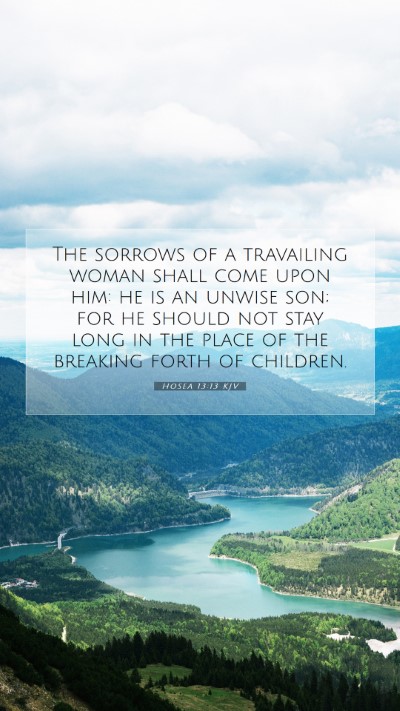Old Testament
Genesis Exodus Leviticus Numbers Deuteronomy Joshua Judges Ruth 1 Samuel 2 Samuel 1 Kings 2 Kings 1 Chronicles 2 Chronicles Ezra Nehemiah Esther Job Psalms Proverbs Ecclesiastes Song of Solomon Isaiah Jeremiah Lamentations Ezekiel Daniel Hosea Joel Amos Obadiah Jonah Micah Nahum Habakkuk Zephaniah Haggai Zechariah MalachiHosea 13:13 Meaning
What is the meaning of Hosea 13:13?
The sorrows of a travailing woman shall come upon him: he is an unwise son; for he should not stay long in the place of the breaking forth of children.
Hosea 13:13 Bible Verse Meaning
Understanding Hosea 13:13
Bible Verse: Hosea 13:13 - "The pains of a woman in childbirth shall come upon him: he is an unwise son; for he should not stay long in the place of the breaking forth of children."
Overview
Hosea 13:13 serves as a profound commentary on the consequences of rebellion against God. This verse uses the imagery of childbirth pains to symbolize impending judgments, denoting a time of great distress. By analyzing this verse, we can gain Bible verse understanding that reflects not only the punishments that await Israel but also the broader themes of divine mercy and justice.
Contextual Background
The Book of Hosea is deeply rooted in the history of Israel and its covenant relationship with God. During this time, Israel was apostate, engaging in idolatry and turning away from the Lord, which led to divine chastening. Understanding the historical context and the prophetic nature of Hosea helps illuminate the meaning of Bible verses within this passage.
Verse Analysis
In Hosea 13:13, the metaphor of childbirth signals a time of suffering and consequences for sin. Here, the pains of a woman in childbirth represent the distress of judgment. The references to an unwise son suggest the folly in ignoring the consequences of sin. Thus, we can interpret this verse as a plea for repentance and a warning of inevitable pain.
Insights from Commentaries
- Matthew Henry: Henry emphasizes the inevitability of the consequences of sin, suggesting that just as a woman cannot avoid the pains of childbirth, so Israel cannot escape the pending judgments for their unfaithfulness.
- Albert Barnes: Barnes highlights the lack of wisdom in Israel's actions, indicating that the nation's refusal to heed God's warnings invites sorrow and suffering akin to childbirth pains.
- Adam Clarke: Clarke points to the symbolism of childbirth, suggesting that while it brings suffering, it also ultimately leads to new life, reflecting the hopefulness intertwined with judgment.
Key Themes
The themes evident in Hosea 13:13 provide valuable lessons for modern readers:
- The Consequences of Sin: Understanding Scripture teaches that rebellion against God leads to suffering.
- The Importance of Wisdom: The verse underscores the need for discernment in our spiritual lives.
- Divine Justice and Mercy: While God’s judgment is real, His mercy allows for redemption even after pain and suffering.
Application in Daily Life
The applicability of this verse serves as an invitation to introspection. Reflecting on how we approach God’s commandments can lead to better choices and a richer spiritual life. Engaging with Bible study materials can further aid individuals in applying these lessons.
Helpful Bible Study Insights
- Participate in bible study groups to delve deeper into the textual meanings.
- Utilize bible study tools and resources to enhance understanding.
- Consider online platforms for engaging in bible study lessons and discussions.
Additional Cross References
Hosea 13:13 relates to several other SCRIPTURAL passages that echo the themes of judgment, wisdom, and divine justice:
- Isaiah 26:17-18 - The metaphor of childbirth as a time of trouble.
- Galatians 6:7 - The principle of sowing and reaping.
- Proverbs 1:7 - The importance of wisdom over folly.
Conclusion
Hosea 13:13 offers readers a stark reminder of the consequences of sin while also inviting hope through repentance. For those seeking Bible verse explanations or Bible verse interpretations, this passage underscores critical themes relevant not only to ancient Israel but also to our spiritual journeys today. Engaging continuously with Scripture can foster deeper Bible study insights that enrich our understanding and application of God's word in our lives.


